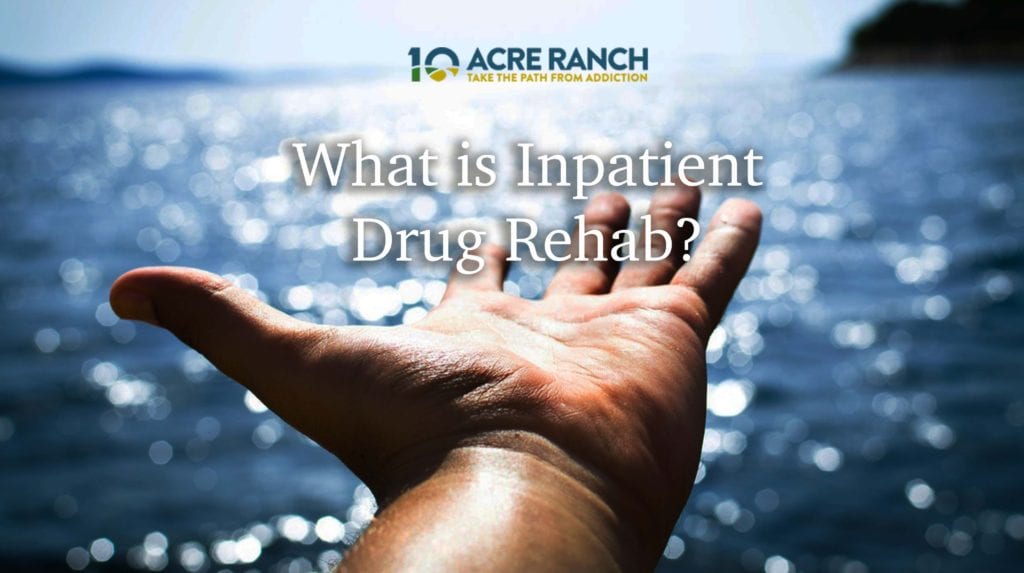
Any stay at an inpatient drug rehabilitation facility typically begins with a full medical detox. The detox process helps people when they first stop using drugs or alcohol by medically supervising their progress. This ensures a safe, comfortable experience through the sometimes painful, early withdrawal symptoms. Detoxing from certain types of drugs, like heroin and opiates can cause deadly side effects, such as seizures, a coma and even heart failure. Because your body had developed a chemical dependency on the drugs or alcohol, it is highly recommended to go through the early detox phase under close medical supervision. This will ensure a safe first step on your road to recovery from addiction.
Medication assisted treatment (MAT) and evidence-based drug rehabilitation
In the detox and early inpatient drug rehab process, certain addiction types are greatly helped with the assistance of medication. Particularly for alcohol and opiates like Oxycontin or heroin, medication assisted treatments have been shown to significantly help patients recover from their addiction. MATs also have shown a statistically-lower rate for relapses later on throughout their recovery. These medications will ease cravings and withdrawal symptoms to the point where they will become manageable for most patients. Buprenorphine is used to ease the withdrawal symptoms of an opioid dependency. It has been shown to significantly reduce death rates from opioid addiction, yet many drug rehabilitation programs still won’t use it.

While some consider these medications to be simply just a replacement addiction, the effects of buprenorphine do not produce a euphoric “high” feeling like street drugs would. Plus, using MATs in a medical setting, on a set schedule is much different from compulsively using the drugs because you’ve become physically dependent on them.
Medication assisted treatments can reduce cravings and the inevitable relapse that follows those cravings. The medication doses are tapered-off slowly, over time to help the patient steadily kick the habit and lead to a full recovery. Remaining in a treatment program is extremely beneficial to the ultimate goal of sobriety. An inpatient drug rehab program will help you build the foundation of your recovery by giving you the tools to survive once you reintegrate into society.
What is inpatient drug rehab?
As an effective form of addiction treatment, inpatient drug rehab is intended to help individuals stop the often destructive, compulsive behavior of abusing drugs and alcohol. Inpatient drug rehabilitation involves living at a residential addiction treatment center, over a period of time. The average stay at an inpatient treatment center typically lasts from 30 to 90 days or more, depending on the severity of the addiction.
Ongoing treatment is essential to help ensure a full recovery from the devastating grip of an addiction. Living in an inpatient drug rehab center is a good opportunity for a patient to get out of their daily routine. This allows them time and space to focusing on what should be the most important thing to them at this moment: staying free from drugs and alcohol. Inpatient rehab will focus on the psychological and behavioral changes necessary to maintain a lasting sobriety. Individual, group and family therapy sessions will all be guided to address the issues that led to your substance use disorder and how to overcome them. Relapse prevention strategies are a crucial component of inpatient rehabilitation programs. These techniques will come in handy when you first go back into your daily routine of going to work or school, handling your relationships and day to day activities.
Most inpatient rehab programs utilize the ‘social model’ of recovery from addiction. Since you will be living inside a treatment center for a period of time, you will encounter other people who are also struggling with drug or alcohol abuse. Working together, in a group setting has advantages that can be felt long after you leave the constant care of an inpatient drug rehab facility. Working together in a group setting helps you learn how to deal with people (and your reactions to them) without using drugs or alcohol. Odds are, if you had been using for a period of time, you may have forgot basic life skills like dealing with other people in a natural, healthy way.
Beyond the social aspect of inpatient drug rehab, your addiction treatment program should focus heavily on individualized treatment. Individual cognitive behavioral therapy sessions (CBT) will help facilitate a lifestyle free from drugs and alcohol. Changes in your attitude and behavior are important to achieve when you’re trying to stay sober for the long term. All of these therapies should help you develop stress management and coping skills that help you avoid some common relapse triggers.
Many of your daily activities will consist of various different forms of therapy and other activities which are designed to teach you how to live a sober lifestyle. Many clinics offer meditation, yoga, art classes and different group activities.
How long should treatment at a drug rehabilitation center last?
The amount of time it takes someone to complete an alcohol or drug rehabilitation varies greatly, depending on the individual patient’s needs and circumstances. Studies have shown that the longer someone stays in treatment will have a greater likelihood for positive results. For a patient who had a chemical dependency on multiple substances, or someone who had an co-occurring mental health issue, inpatient drug rehab could last well over 90 days. There is no one, single path to recovery. Each person is different and the results will vary depending on the treatment program you decide to attend.
At 10 Acre Ranch, we have helped thousands of patients come clean from drugs and alcohol. We use an evidence-based approach in substance abuse treatment and aftercare. To speak with a certified addiction specialist, call us today. We are available 24/7:
(877) 228-4679






